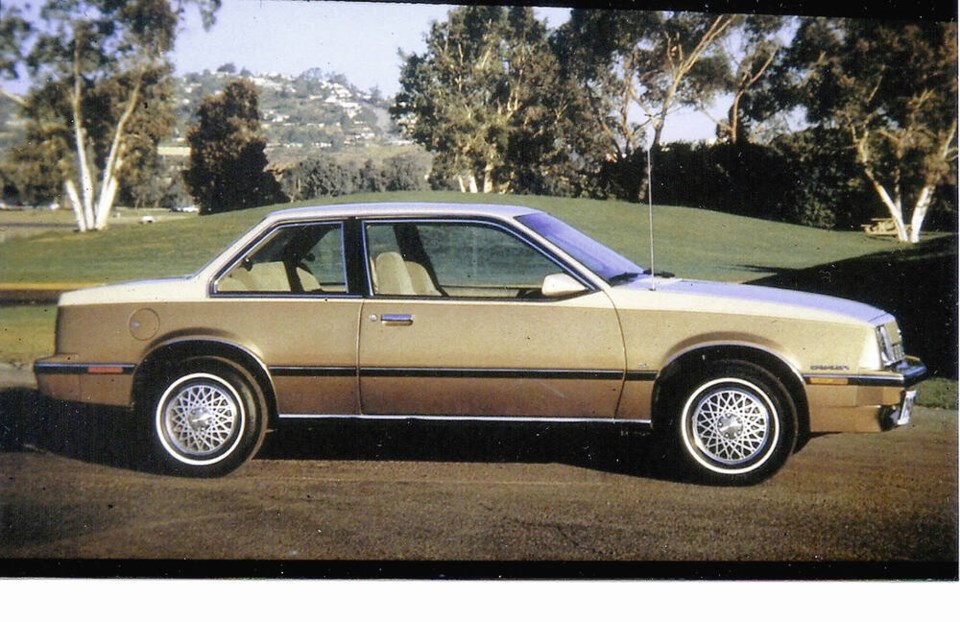General Motors was determined to do it right this time after several attempts. It had decided to build a smaller car as far back as the 1940s and developed the 1947 Chevrolet Cadet, but cancelled it before production. Now by the 1980s, the automotive scene had changed and there was an invasion of high-quality foreign cars.
They started landing in the late 1940s and kept arriving in larger numbers. First were the English, followed by other Europeans, Japanese and Koreans. Ford and General Motors imported some “captive imports” from their overseas arms, but their hearts weren’t really in it. America was seen as “big car country.”
GM’s first real production attempt was the 1960 Chevrolet Corvair compact with an air-cooled rear engine and four-wheel independent suspension. It was clearly inspired by the German Volkswagen.
The Corvair was successful for a few years but succumbed to a vicious attack on its handling by consumer advocate Ralph Nader in his 1965 book, Unsafe At Any Speed.
Next was the 1971 Chevrolet Vega, which had a strike-delayed launch and suffered assembly and mechanical problems. It never reached the potential GM had envisioned.
Deciding that if it couldn’t beat them it would join them, GM co-operated with its foreign arms to produce the small Chevrolet Chevette in the mid-seventies. It was successful but the imports kept coming.
The fast-selling rear engine Volkswagen dominated small car sales for over a decade, followed by Japanese cars like Datsuns (later Nissans), Toyotas and Hondas. Sales continued climbing until the American industry finally accepted that smaller cars were not a passing fad stimulated by periodic oil price spikes. There was a small-car market.
GM determined to fight back again with a car positioned between the small Chevrolet Chevette and mid-sized X-cars (Chevrolet Citation, et al.).
The result was the 1982 front-wheel drive J-car (a factory code) in mid-1981. In the ultimate manifestation of GM’s body shell game it came as a Chevrolet Cavalier, Pontiac J-2000, Oldsmobile Firenza, Buick Skyhawk and Cadillac Cimarron.
GM was determined to equal the foreign competition in performance and fuel economy, while eliminating the perceived quality gap between American cars and imports.
Panel gaps and paint lustre, called fit and finish, would be equal or superior to the invaders. Suppliers were warned that inferior components would be ruthlessly rejected.
The Chevrolet Cavalier had four body styles: two-door hatchback, two- and four-door notchbacks and four-door station wagon. Other divisions’ offerings were tailored to their target clienteles.
When the 1982 Chevrolet Cavalier arrived in mid-1981 the Honda Accord was the benchmark. Since the
sedan’s arrival in 1978 (the two-door came in 1976) the Accord’s performance, refinement and economy quickly made it the target for small/mid-size sedans.
The Accord had a technical edge over the Cavalier. Its overhead cam 1.6 litre engine was smoother and easier revving than the Cavalier’s 1.8 litre overhead valve four. The Accord’s five-speed manual transmission had one more gear.
Transport sa���ʴ�ý combined fuel economy ratings were equal at 7.1 L/100 km (39.7 mpg).
Despite the Cavalier’s 88 horsepower against the Accord’s 75, the Accord reached 97 km/h (60 mph) in 12.2 seconds vs. the Cavalier’s 13.1 (Car and Driver 5/82). This was mostly due to its extra 136 kg (300 lbs), caused in part by cost-saving use of heavier X-car components like suspension arms, steering, air conditioning compressor and radiator.
To be as appealing a possible, the Cavalier was well equipped and luxuriously appointed. Its 2,570 mm (101.2 in.) wheelbase, 119 mm (4.7 in.) longer than the Accord’s, gave it a smoother ride and more interior space.
There were only minor changes over the first generation’s six-year run. The performance deficiency was somewhat alleviated by increasing displacement to 2.0 litres and adding throttle body fuel injection for 1983.
The Pontiac version, now designated the 2000, began using the Brazilian-built, overhead cam, fuel-injected 1.8 litre four. For 1984 it became the 2000 Sunbird, then in 1985 just Sunbird, and offered a turbo version.
Cavalier, Firenza and Cimarron offered the optional X-car 2.8 litre, overhead valve V-6 for 1985 and Cavalier had a sporty Z24 and available five-speed manual for 1987, the year Cimarron made the V-6 standard.
Although the J-cars, except the Cimarron (it just wasn’t seen as a Cadillac), enjoyed reasonable sales success, they didn’t vanquish the foreign nameplates. Accords sales continued strong, as did the Toyota Camry “imports,” ironically now made in the U.S.
The Cadillac Cimarron and Olds Fiesta were discontinued in 1988 and Buick Skyhawk in ‘89. The Sunbird and Cavalier went into their third generation and continued into the new millennium before being replaced by more modern designs.
The J-cars came closer but still didn’t eradicate the foreign brands, which continue to be Detroit’s adversary.



